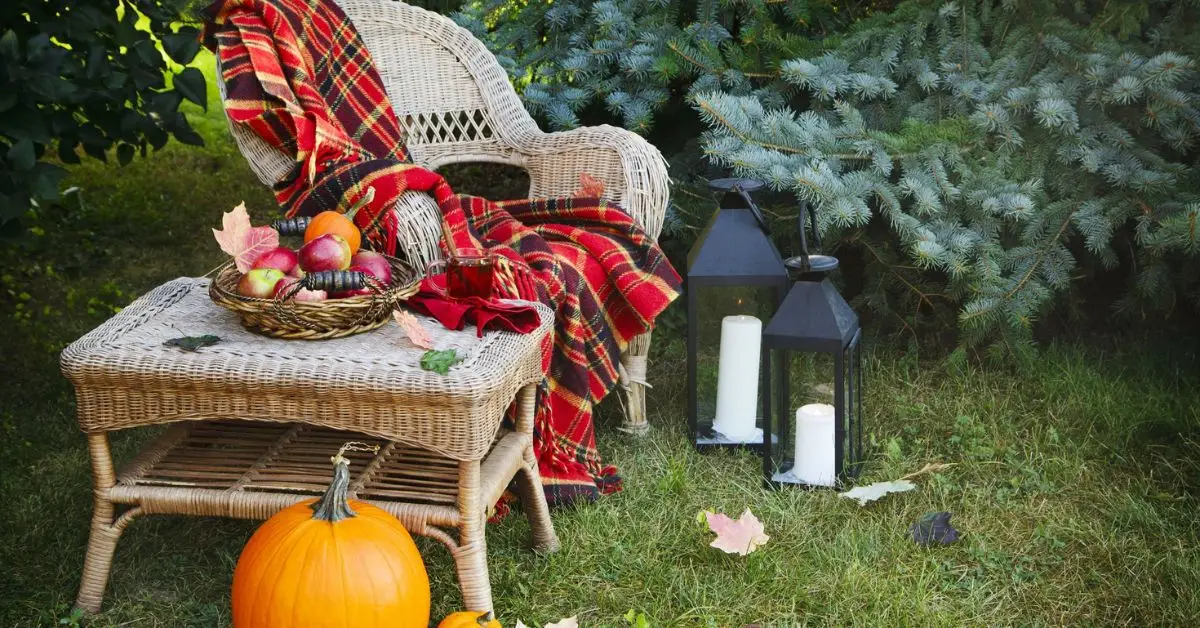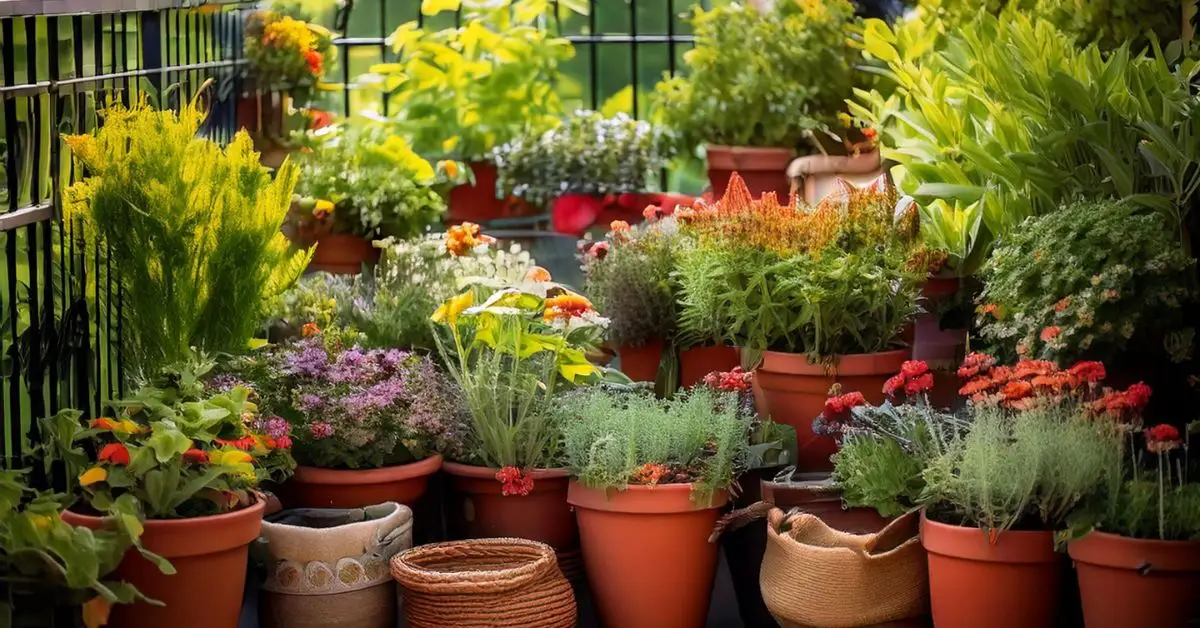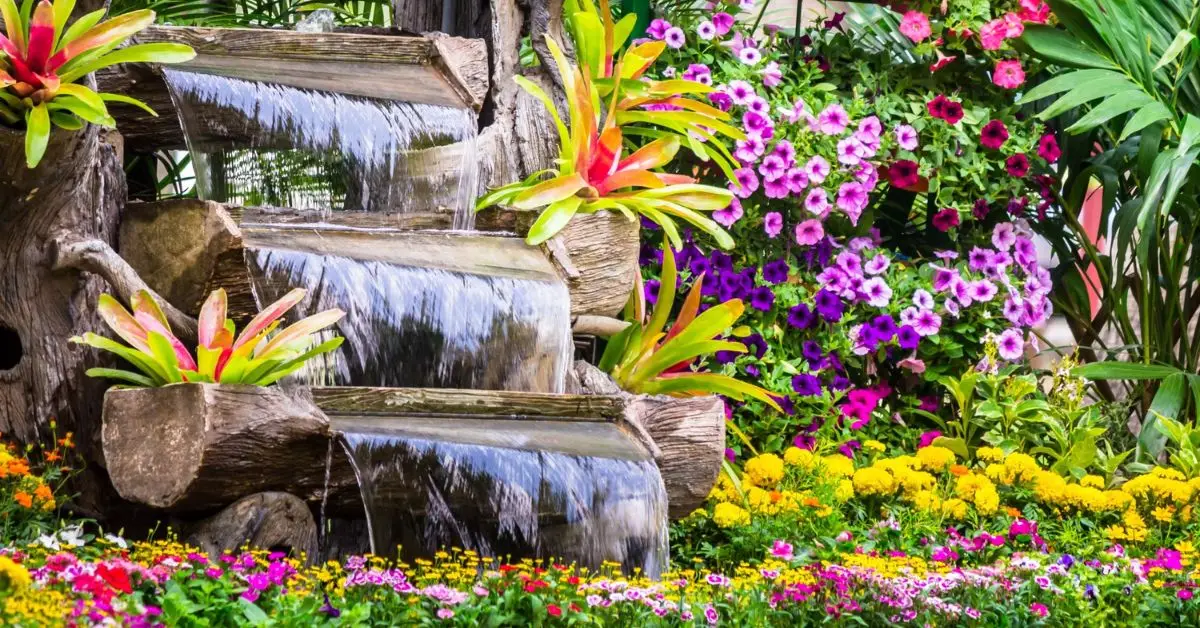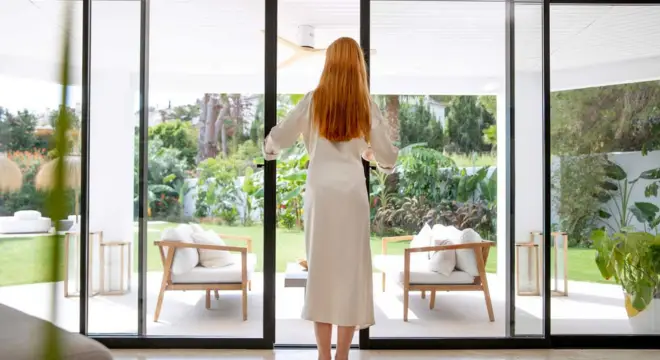10 Easy Fall Garden Ideas to Transform Your Home This Season
A lot of people think that gardening ends in the summer. I used to think the same thing. But having working with real gardens and genuine seasons for 20 years, I can assure you that October is when the magic really starts.
The ground stays warm long after the air cools off. That mix helps roots establish down without being too hot in the summer. There are fewer pests, weeds, and more regular moisture. This is the perfect season to plant trees, shrubs, or perennials.
Also, there’s less to take care of. Less watering is needed when it’s cooler. You don’t have to keep messing with the dirt all the time. And if you plan beforehand, your garden will not only survive the fall, but it will also look better than it has all year.
So don’t put off your intentions to work on your garden until spring. In the fall, you may start over, rebuild, and set things up the right way. In a few months, you’ll be glad you did.
Have you ever tried to plant in the fall? What worked and what didn’t? I would love to know how it went for you.
Prep Like a Pro: Autumn Cleanup and Soil Revival
Let’s be honest: cleaning up the garden is a pain. It’s easy to just tear everything out, put the trash in bags, and call it a day. But if you want your garden to be even better next year, you need to tidy it up in the fall in a smarter, more planned way.

Clean Up Without Destroying Nature
One of the major mistakes I notice is Cleaning too much. A lot of articles just state “clear the beds,” but they don’t talk about the environmental impact. Those dried-up seed heads, fading perennials, and perhaps some leaf litter? They protect pollinators, helpful bugs, and small animals that live through the winter.
I’ve seen gardeners in colder places like Minnesota leave empty stems and flower heads alone until early spring. This is good for the local bee populations. A small change in habit can have a big effect. You’re not just getting your garden ready; you’re also keeping the ecology alive.
Look around before you take the rake. What may stay and still be useful? What really needs to go?
Give the soil you will use later some food.
After you’ve cleaned up a little, it’s time to think about what’s underneath.
The best time to build soil is in the fall. This is when you put everything in layers: compost, shredded leaves, and old manure. Winter’s freeze-thaw cycles will naturally break it down and pull nutrients deeper. You don’t even have to till. Just stretch it out and let time do the rest.
If you have room, you can also plant cover crops like clover or buckwheat. They stop erosion, keep weeds down, and put nitrogen back into the soil. This is the kind of work that pays off when spring comes and you don’t have to start over.
I always tell people to think of fall as the time when their garden becomes better. If you give the soil a break and feed it the appropriate way, you’ll grow better later with less work.
Have you thought about letting nature do some of the work or adding compost in the fall? It makes a difference. Please tell me what worked best for you.
Fall Planting: Beauty and Bounty in One Season
Planting in the fall isn’t simply about getting the last vegetables in. You may set the tone for the next few months, both in terms of looks and actions.
First things first: your garden doesn’t have to seem empty or boring right now. In the fall, a lot of plants look their best.
Be Brave with Fall Colour
These plants—mums, asters, decorative cabbage, rudbeckia, and goldenrod—aren’t just “filler.” They are great for adding colour to your garden in the fall and do best in chilly weather. I like to add little pumpkins, dried grasses, and decorative kale to them to make garden beds and containers look alive and not like they’re winding down.
It’s worth trying to layer in seasonal colours only for the change in mood it creates. Without much work, your yard seems warm, grounded, and seasonal.
Grow Food While You Can
Most people don’t know this, but fall is actually the best time to cultivate some veggies. The warm weather and shorter days are great for cool-season crops including spinach, kale, arugula, carrots, garlic, radishes, and green onions. After a mild frost, they usually taste sweeter.
I’ve seen gardeners in Zones 6 and 7 plant garlic now and get a great harvest by early summer on Reddit. Some people even continued picking fresh greens in small plastic tunnels until December.
It’s not just gardening; it’s food security, especially with prices going up.
You can also mix food and beauty together. Put leafy greens in pots, mix chives or rainbow chard into your front beds, or put garlic amongst flower borders. Foodscaping is what this is called, and it makes your garden perform two things at once.
Planting in the fall isn’t a last-ditch effort; it’s a wise choice. You get food, colour, and a head start on spring. No space that isn’t used. No time wasted.
Are you planting flowers, vegetables, or both this fall? Tell me how you’re changing things up.
Container Magic: Small Spaces, Big Fall Impact
If you think that only those with big yards can garden in the fall, let’s change that assumption right now. Containers are one of the simplest and most adaptable methods to make your garden come to life this season, even if you only have a porch, balcony, or small patio.

I’ve worked with customers who believed they were “done for the year,” but a few well-placed fall containers made their outdoor areas look full, cosy, and rich all of a sudden.
Make Statement Pieces With Colour and Texture
You don’t need a lot of plants. Only the correct ones in the right places.
Get a big pot and fill it with ornamental cabbage or kale. Then, add some pansies or violas and top it off with a big burst of chrysanthemums. You may make a fall-themed centrepiece by adding a pumpkin or two, some dried branches, or long grasses.
This isn’t just a theory; Proven Winners and Martha Stewart both show this precise layering strategy because it works. It’s easy to care for, looks great, and is straightforward.
Also, don’t forget about the lights. As the days get shorter, a few battery-powered fairy lights, a lantern, or a low-watt garden spotlight can make your container look very different at night.
Think about what you can grow in a pot again.
There are more than just flowers.
In pots, greens like spinach, arugula, and lettuce grow quite well. Thyme, sage, and parsley are also good, especially in the fall when they aren’t bolting or drying up. You may even plant garlic in deep pots right now and not think about it until next season.
You can plan, change, and enjoy your garden in real time with containers. You can move them about, clean them once a week, or make little seasonal zones in any part of your room.
What do you like to put in your fall containers? Flowers, food, or both? Tell me what’s sprouting close to your door.
Refresh the Space: Hardscape and Natural Décor That Set the Mood
It’s not simply what you plant in the fall; it’s also how your place feels. This is the time of year when outdoor spaces go from being useful to being nice to look at. And the good news is? You don’t have to spend a lot of money or do a lot of work to make it happen.
It’s more about adding layers of textures, light, and other visual clues that suggest, “This space is alive, cosy, and ready for the season.”
Use natural things to hold the scene together.
Begin with the basics, such dried hydrangeas, pinecones, cornstalks, straw bales, and gourds. These are classic fall decorations that look great when put together with care.
I like to make a corner seem nice with one straw bale, a few pumpkins of different sizes, some dried branches, and maybe a wreath hanging over it. It’s not hard. But it makes a room feel warm and lived-in, especially near doors or patios.
Add light and height, especially at night.
Lighting is one of the best things you can do to improve your home in the fall. When the sun goes down early, a single string of warm LEDs, a few solar lanterns, or even candles in mason jars may make your yard look and feel completely different.
And don’t forget about height. Even as plants start to fade, tall grasses, decorative trellises, or even a rustic arbour can create a vertical line that draws the eye up and gives your garden some structure.
Adding height and light can completely change small spaces. It doesn’t have to be fancy; it just needs to feel planned.
So, before you say your outside space is “done for the year,” think about how you may make it more inviting. More complete?
Do you like to decorate your yard in the fall in a rustic, simple, or flamboyant way? I’d like to know what makes it all come together for you.
Support Life: Make Your Fall Garden Wildlife-Friendly
It’s not only about how things appear in the fall garden. It’s also about what lives on and what you help protect during the winter.
A garden that is really healthy does more than just grow attractive things. It feeds birds, protects pollinators, and keeps native species’ life cycles going. And fall is the time of year when your space determines whether it nurtures life or takes it away.
Think About Pollinators When You Plant
You don’t have to pluck everything out as soon as it fades.
Goldenrod, asters, sedum, and native sunflowers are late-season flowers that are very important food sources for bees, butterflies, and other helpful insects that are getting ready to spend the winter. You are making a food supply that no greenhouse can copy if you leave them up, even as they dry out.
Experts from Homes & Gardens and Martha Stewart have talked a lot about how important these plants are in fall landscapes, but what’s often missed is that it’s not just about how they look. The timing is important. These plants are important because they bloom when nearly nothing else does.
Give the Creatures You Can’t See Some Space
Most garden blogs don’t talk about this: seed heads, hollow stems, and piles of dried leaves are all ways that native bees, frogs, other beneficial insects can stay alive during the winter.
You don’t have to leave your whole yard a mess. Just pick a little area where everything can stay wild. I’ve seen gardeners leave one corner alone all winter, and then in early April, it becomes a busy place for life.
There are a lot of postings on Reddit from people who live in colder areas that say to forgo the leaf blowers, use what you have to mulch, and be careful about what “clean” truly means.
You are not ignoring your garden. You’re letting it breathe, grow again, and maintain a world that works silently below the surface.
If you’re also interested in supporting pollinators beyond just bees and butterflies, you might want to attract hummingbirds to your home garden with plants that provide late-season nectar.
Are you already done anything in your fall garden to benefit animals and pollinators? I’d like to hear how you’ve found a balance between beauty and biodiversity.
Find Your Style: Design Trends That Actually Work in Fall
Your garden can go from “planted” to “designed” in the fall. Most people think about what to grow, but I’ve learned that how you arrange and express your space is just as important.
You don’t need a landscape designer. You just need to pick a direction and stay away from the mess that might happen when you try to do too much with too little room.
Maximalist or Minimalist? Choose a Style and Work Around It
Right now, planting in dramatic, layered patterns is coming back. LivingEtc and other garden design sites have talked about the trend towards maximalist gardens, which contain plenty of different textures, colours that overlap, and a sense of wildness. Rudbeckia, decorative grasses, and rich burgundy sedum are all fall plants that look great with that style.

But not everyone wants that. A unified cottage design can be preferable for you if your room is smaller or you want a more relaxing atmosphere. Put your plants in groups based on their colour, utilise curved lines instead of abrupt angles, and allow repetition make rhythm. A few carefully chosen things are better than a lot of random picks.
Both techniques work; the important thing is to pick one and stick with it.
Don’t make the small-space mistakes
People try to add too much too quickly to their fall gardens, which is where most of them go wrong. Before you bring home another pot of mums, take a moment to think about whether this environment feels quiet, clear, and balanced.
Better Homes & Gardens really did put out a guide on how to make small gardens feel more smaller. The worst offenders? Too much furniture, no vertical stacking, and too many small pots instead of a few big ones.
I helped clients fix this by telling them to limit their colour pallet and think in threes. Three main plants. Three materials that repeat. Three different heights. That should be enough to make any modest fall garden feel planned, not crowded.
Fall isn’t just a time to plant; it’s also a chance to design. Everything from the plants to the decor will start to feel more in line when you treat your outside space like a room.
If you’re ready to take it a step further and reimagine your space, these garden makeover ideas can help you explore new layouts and focal points for fall.
Are you drawn to a big and rich fall garden theme or a gentle and modest one? Tell us about your style and how you’ve made it come to life.
Set It Up for Rest: Seasonal Maintenance and Winter Prep
Most gardeners are exhausted by the end of October. I understand that “winterizing” your garden sounds like a list of things to do. But this time of year isn’t simply about putting things away. It’s about keeping what you’ve developed safe so that spring doesn’t feel like starting over.
And the truth is, making a few wise choices now can save you hours (and a lot of stress) later.
Keep Your Plants Safe
Now is the time to help your new trees, shrubs, and perennials survive the cold if you planted them this fall.
Water the plants deeply once before the ground freezes. This helps keep roots moist during dry spells in the winter. Then, put at least two to three inches of mulch around the base, but not too close to the stem or trunk. You may think of it as insulation that keeps the temperature of the soil more steady.
If you live in a region where the wind blows a lot or where the freezes are very bad, you might want to use burlap wraps or temporary windbreaks on delicate plants. These steps may seem old-fashioned, but they work. I’ve seen experienced gardeners on Reddit use tomato cages and straw to make their own coverings for herbs and kale. They’re inexpensive, quick, and work well.
Don’t forget to make plans ahead of time.
This is also a great time to plant spring flowers like daffodils, tulips, alliums, and crocuses. Put them in the ground while the earth is still soft, and by the time the snow melts, you’ll already see colour coming up through the dirt.
Before the first frost, I always tell gardeners to take a few pictures of their fall beds. When everything is covered in snow, it helps you remember where things are, and it makes planning for spring much easier.
Some of the gardeners I know use this time to get ready for seed swaps, clean their tools, and even plan out how they want their garden to look next year. These small actions in the fall have a large impact afterwards.
Fall is also the time when some wildlife looks for new shelter—so if you’ve noticed unwanted visitors near your home, here’s how to stop bats from invading your home using easy, DIY-friendly fixes.
The idea isn’t to be perfect; it’s to keep things safe. You don’t need to cover your garden with plastic or scrub it clean. It just needs some aid to get a good night’s sleep.
What do you do to get ready for winter? I’d love to know what you do to help your garden survive, whether it’s planting garlic or wrapping up flowers.
Keep It Smart: Budget-Friendly and DIY Fall Ideas That Work
You don’t have to spend a lot of money to make your garden look great in the fall. Some of the most beautiful and useful gardens I’ve seen were made by folks who repurposed what they already had and just thought of new ways to use it.
Fall is the best time to extend your creativity, not your bank account.
Use what you already have again, in a new way, or in a new way.
Look around in your shed or garage first. Have a ceramic pot with a fracture in it? Put dried flowers in it to make a basis. More bricks? Make a trail or a quick firewood stack that also looks nice. You can use fallen branches, twigs, and pinecones as natural mulch, homes for animals, or simply simple seasonal decorations.
With just a few straw bales, dried corn stalks from a friend’s field, and a few mismatched lanterns, I’ve seen gardeners make wonderful fall displays. You don’t have to have perfect symmetry. In the fall, rustic looks natural.
Simple DIY hacks might help you make the most of the season.
Want to keep growing into late fall without a greenhouse? If you have a raised bed, try putting row covers, hoop tunnels, or even an old window pane over it. These cheap season extenders let you choose greens and herbs well beyond the first frost.
You can also plant cover crops like clover or winter rye in beds that are empty. They not only stop erosion and weeds, but they also naturally feed nutrients back into the soil, which means you won’t need to buy as much fertiliser next spring.
Gardening in the fall doesn’t have to cost a lot. It just has to be on purpose. A few easy steps, some planning, and a creative mind can get you a long way.
What is the best low-cost method you’ve tried that actually worked in your fall garden? Let’s share our thoughts.
Make It Yours: Build a Fall Garden Plan That Actually Fits Your Life
You’ve seen that gardening in the fall can be colourful, prolific, good for the environment, and even cheap. But here’s what most people don’t know: you don’t have to do everything.
The best gardens aren’t the biggest or most beautiful ones; they’re the ones that are planned out. Made to fit your way of life, the weather, and how much energy you have.
Instead of trying to keep up with every fad or fit in every plant, take a step back and think about what you really want your garden to give you this season.
Is there a splash of colour near the door? A few new greens until November? A place that seems calm while everything else is cold and grey? Choose two or three things that are most important to you and build around those.
To get started, here’s an easy way:
- Clean up one area, but leave a corner wild for pollinators.
- Put two fall containers with different colours and textures by your front door.
- Plant one easy-to-grow food crop, like garlic or spinach, that will give you a lot of food.
- Add one light source to the space so you may enjoy it after dark.
- Prepare the soil in one bed, even if you don’t plant anything there until spring.
- It doesn’t have to be perfect. But it does have to begin.
Your fall garden doesn’t have to look like a magazine cover to be good. It just has to seem like something you selected, not something that happened to you.
What section of your space are you going to start with first, and why? Let’s not let this season feel like stress; instead, let’s make it feel like development.
Ready to Reset Your Garden This Fall?
You don’t need a full weekend, a big yard, or a fancy plan to make your fall garden count. You just need a little intention — and a reason that feels personal.
Whether you’re planting a few garlic cloves, refreshing a front-step container, or just letting the bees overwinter in your flower heads, you’re doing something meaningful. Fall gardening isn’t just maintenance. It’s mindset.
And the best part? The work you put in now isn’t just for today. It echoes forward — into spring, into your meals, into how your outdoor space makes you feel in the quiet months.
So take one idea from this guide and start with that. Don’t wait for “next season.”
You’re in it.
What’s the one change you’re making in your garden this fall — and what are you hoping it gives you back later? Let’s start a conversation.
Want more practical garden ideas like this?
Visit Build Like New for easy tips, DIY plans, and seasonal guides to help you grow smarter, not harder.
Disclaimer: This article is for informational purposes only. Always consider your local climate, soil conditions, and plant hardiness zones before starting any garden project. Consult a local gardening expert or extension service for personalized advice.
⭐ Subscribe to Our Newsletter
Subscribe to the publishers newsletter to receive the latest news and updates directly in your inbox


